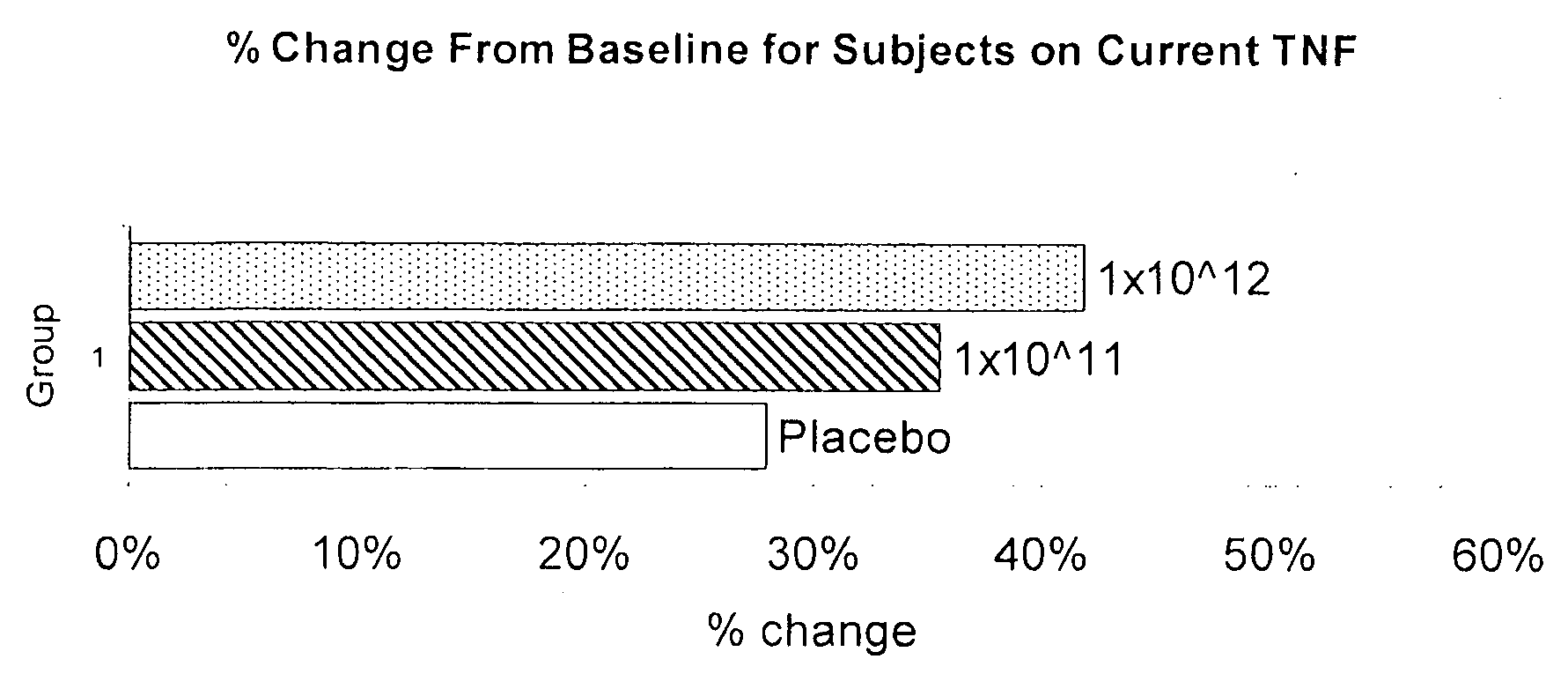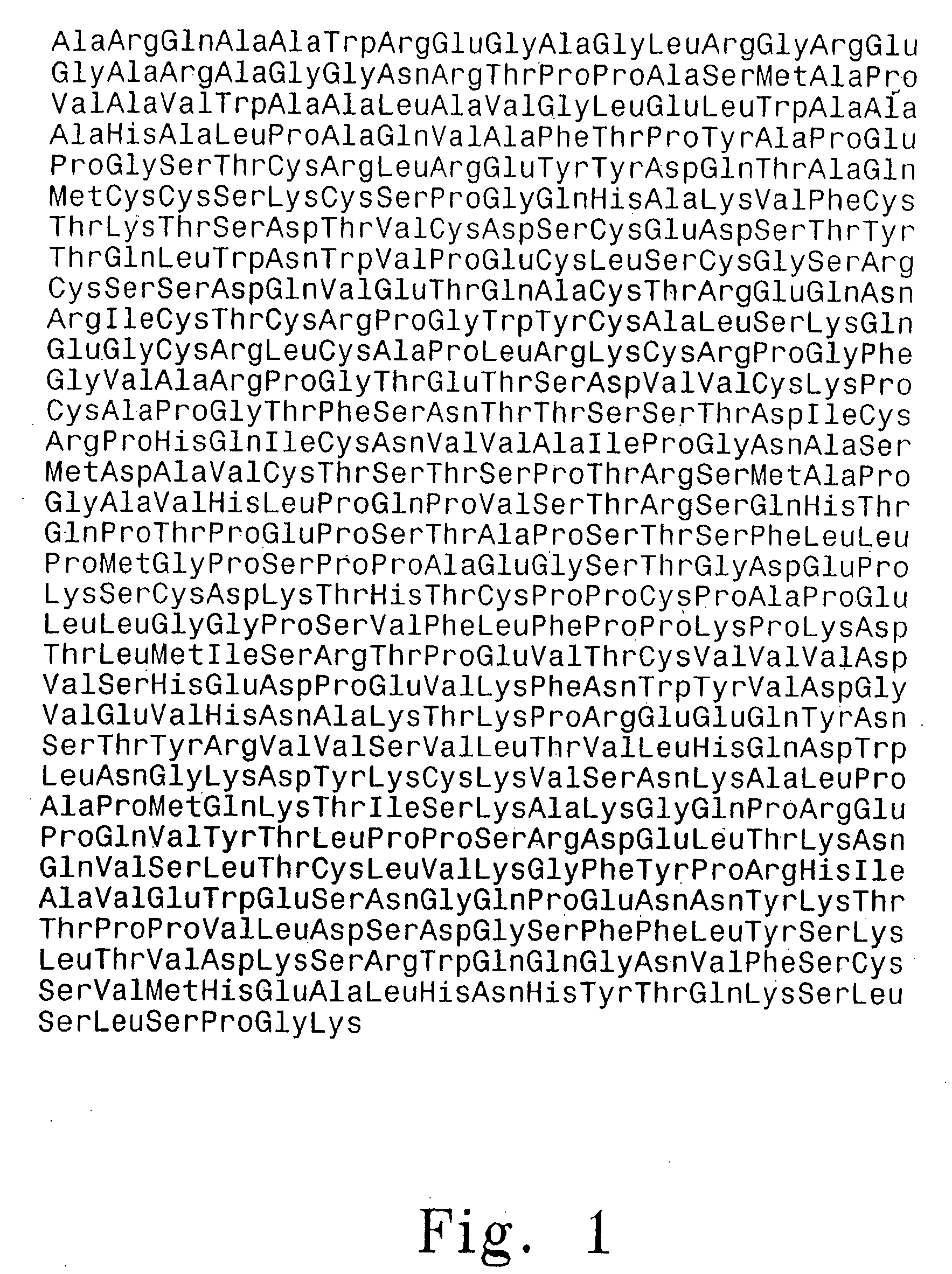Methods for treating target joints in inflammatory arthritis using AAV vectors encoding a TNF antagonist
a technology of inflammatory arthritis and target joints, which is applied in the field of arthritis or arthritic syndrome treatment, can solve the problems of few effective therapies, significantly shorter lifespan, and enormous toll on the health system and the overall economy, and achieve the effect of enhancing the treatment effect of a polypeptide tnf- antagonis
- Summary
- Abstract
- Description
- Claims
- Application Information
AI Technical Summary
Benefits of technology
Problems solved by technology
Method used
Image
Examples
example 1
[0122]Study Design The purpose of this study is to evaluate repeat doses of the rAAV vector containing the polynucleotide encoding TNFr:Fc administered to persistently symptomatic joints in individuals with and without concurrent systemic polypeptide TNF-α antagonist therapy. Individuals enrolled in the first cohort receive a dose 1×1011 DRP per mL of joint volume. Individuals are dosed in the second and third cohorts respectively at 1×1012 and then to 1×1013 DRP per mL of joint. If no safety concerns arise after the first three cohorts of 20 individuals each enrolled, 60 additional individuals are randomized into one of three cohorts and receive the rAAV vector containing the polynucleotide encoding TNFr:Fc at one of the three doses' above.
[0123]The study design is summarized in Table 1 below. Target joints are assessed for tenderness and swelling every 4-6 weeks.
TABLE 1Clinical Trial DesignNumberDoseSegment A1Segment B2ofConcentration(1st Dose)(2nd Dose)Individ-ofNum...
PUM
| Property | Measurement | Unit |
|---|---|---|
| molecular weight | aaaaa | aaaaa |
| pH | aaaaa | aaaaa |
| swelling | aaaaa | aaaaa |
Abstract
Description
Claims
Application Information
 Login to View More
Login to View More - R&D
- Intellectual Property
- Life Sciences
- Materials
- Tech Scout
- Unparalleled Data Quality
- Higher Quality Content
- 60% Fewer Hallucinations
Browse by: Latest US Patents, China's latest patents, Technical Efficacy Thesaurus, Application Domain, Technology Topic, Popular Technical Reports.
© 2025 PatSnap. All rights reserved.Legal|Privacy policy|Modern Slavery Act Transparency Statement|Sitemap|About US| Contact US: help@patsnap.com



